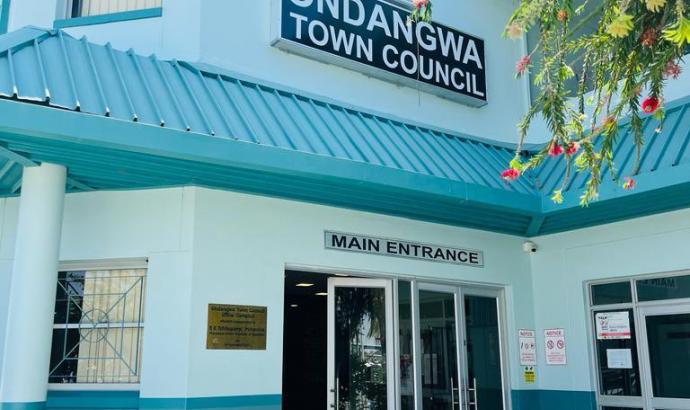Environmental advocacy is often neglected in local media, leading to a lack of public awareness on issues crucial to sustainable development.
The Namibian has lined up a few environmental advocates to explore the ins and outs of championing the environment.
Environmental reporter Absalom Shigwedha says several environmental concerns fail to capture the public’s attention, as well as that of potential investors.
He highlights water scarcity, illegal fishing and biofouling as critical issues demanding immediate action.
“While climate change and biodiversity loss receive significant focus, issues like water scarcity pose a very real threat, with the potential to worsen conflict, particularly in rural regions struggling to secure water for agriculture,” Shigwedha says.
He says illegal, unreported and unregulated fishing is a major threat to the health of the planet’s oceans.
“By depleting fish stocks, the delicate balance of marine ecosystems is disrupted, with cascading effects throughout the food chain,” he says.
Shigwedha says biofouling, which refers to the accumulation of unwanted organisms on a ship’s hull, is another issue not receiving enough attention.
“Public understanding of these challenges is limited. Environmental organisations and the media have a crucial role to play in raising awareness and bringing these issues to the forefront of public discourse.”
GOVT SUPPORT
Toini Amutenya is the founder of the National Youth Climate Action Network of Namibia, a youth-led organisation that aims to support the government in implementing targeted measures nationally.
She says the network implements and promotes radical youth-led climate actions for sustainable development and also actively advocates the implementation of initiatives to help communities build resilience and tackle climate change challenges head-on.
Amutenya says many underlying issues affect communities as a result of climate change and environmental degradation.
“We need to find solutions and support communities to overcome some of the challenges they face, particularly in Namibia’s landscapes,” she says.
Amutenya says a lack of funding and support from stakeholders has kept her from doing more.
She says the Ministry of Environment, Forestry and Tourism has provided some platforms for dialogue and showcasing their plans to address environmental issues.
“I must praise the institutions which have provided spaces for the youth to get funding support to lead some of their projects. For example, the Development Bank of Namibia has a climate change strategic funding opportunity available for the youth to access.
Despite this, Amutenya says her organisation is not invited to be involved in decision-making and validating policies.
MEDIA ABSENCE AND FUNDING ISSUES
Namibia Environmental Education Network (Neen) coordinator Liina Nantinda laments the lack of media attention to environmental initiatives.
“We consistently invite the media to our events, however, these efforts often yield no results.”
She highlights the critical role of environmental education.
“An uninformed citizenry poses a significant hurdle in our pursuit of environmental sustainability,” she says.
She says public awareness is paramount in initiatives like clean hydrogen production.
“The environment ministry deflects responsibility to the education ministry and vice versa,” she says about the government’s involvement in public awareness.
This hinders the allocation of adequate funding for vital programmes, she says.
“We urge the media to actively engage with environmental education initiatives.”
She says the media currently plays a negligible role in educating the public on environmental issues.
“On occasion, we extend invitations to the media, but they never show up for our events,” she says.
“For example, writing about the successes of protests and movements that are taking place on the ground,” Nantinda says.
THE GOOD NEWS
Amutenya says it’s important to focus on positive developments too.
“We should not just focus on the negative stories of where we are falling short or lagging behind, but rather also tell the stories of how we have been able to influence impacts on the ground,” she says.
Amutenya says the media is better at reporting on failures than successes.
Nantinda says effective public participation in green hydrogen initiatives, for example, necessitates a well-informed citizenry regarding environmental matters.
She highlights the challenges in securing funding for environmental projects.
“Without strategic media engagement to raise awareness and gain support, attracting additional funders becomes a significant hurdle,” she says.
She says challenges are worsened because of a lack of clear ownership between the environment and education ministries.
“Environmental education inherently encompasses both environmental and educational aspects. The education ministry seems to disclaim responsibility, while the environment ministry appears to delegate it entirely.”
Nantinda says both ministries need to collaborate and recognise environmental education as a shared responsibility.
COLLABORATION
Environment ministry spokesperson Romeo Muyunda says the ministry supports environmental advocates.
“Advocacy groups are a partners in environmental preservation, as we all have the common objective to ensure our environment is protected and resources are extracted and used in a sustainable manner, as per the Constitution,” he says.
Muyunda says advocacy complements the government’s efforts in achieving broader objectives.
He says Namibia’s environmental conservation mandate demands a multimodal response, with advocacy groups emerging as essential collaborators with the government.
“Namibia is dedicated to ensuring sustainable resource utilisation for the benefit of future generations, as required by the Constitution,” Muyunda says.
To accomplish this goal, government activities are powerfully complemented by advocacy efforts, he says.
Muyunda emphasises two different kinds of advocacy groups that support this common goal, with some groups operating within established legal and governmental frameworks falling in this category.
The second group consists of environmental activists who offer vital evaluation and observation of government activities and programmes.
He says both strategies are beneficial, provided that all advocacy efforts comply with the law.
According to Muyunda, the following effective alliances are prime examples of the cooperative attitude between advocacy organisations and the government: the Gobabeb Namib Research Institute, EduVentures, the Namibian Pangolin Working Group, and Neen.
Muyunda says the government and advocacy organisations can strengthen the groundwork for environmental protection by working together.
“All Namibians will eventually have a sustainable future because of this synergy,” he says.
Stay informed with The Namibian – your source for credible journalism. Get in-depth reporting and opinions for
only N$85 a month. Invest in journalism, invest in democracy –
Subscribe Now!








